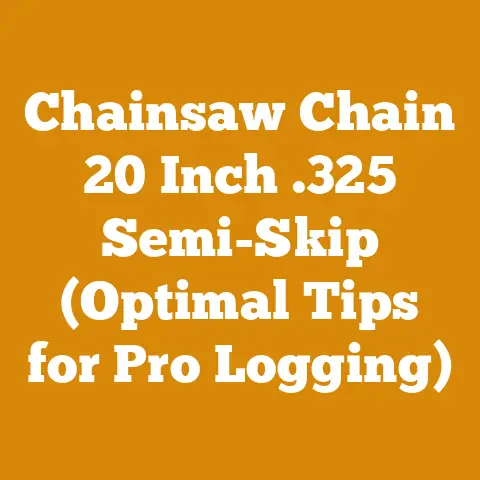Large Tree Shredder Benefits (5 Pro Tips for Efficient Wood Processing)
Large Tree Shredder Benefits (5 Pro Tips for Efficient Wood Processing)
Bold designs in landscaping and land management often call for dealing with large trees, whether it’s clearing land for development, managing forests for health, or simply cleaning up after a storm. That’s where the unsung hero, the large tree shredder, comes into play. I’ve spent years working with these machines, from small-scale residential projects to large-scale forestry operations, and I’ve learned a thing or two about maximizing their potential. This article isn’t just about the benefits; it’s about getting the most bang for your buck, optimizing efficiency, and understanding the true costs involved. Let’s dive in.
Understanding the Allure of Large Tree Shredders
Large tree shredders, also known as wood hogs or horizontal grinders, are powerful machines designed to reduce trees, branches, and other woody debris into manageable mulch or chips. Their appeal stems from their ability to process large volumes of material quickly, turning what would otherwise be waste into a valuable resource. But the benefits extend far beyond simple waste reduction.
Environmental Advantages: Recycling and Reducing Landfill Waste
One of the most compelling reasons to use a large tree shredder is its environmental impact. Instead of burning or sending trees to landfills, shredding allows you to recycle the organic material. This practice reduces methane emissions from decomposing wood in landfills, a significant contributor to greenhouse gases. Moreover, the resulting mulch can be used for landscaping, erosion control, or as a soil amendment, enriching the soil and reducing the need for chemical fertilizers.
I remember one project where we were clearing a large plot of land for a new housing development. Initially, the plan was to burn the trees, a common practice in that area. However, after calculating the environmental impact and exploring the potential for mulch production, we opted for a large tree shredder. The outcome was remarkable. Not only did we significantly reduce our carbon footprint, but we also generated a substantial amount of mulch that was used in the development’s landscaping, saving the developers money on topsoil and fertilizer.
Economic Gains: From Waste to Resource
From an economic standpoint, large tree shredders can be a game-changer. The cost of disposing of large trees can be substantial, especially when factoring in transportation and landfill fees. Shredding on-site eliminates these costs and creates a valuable product that can be sold or used in other projects.
For instance, a cord of firewood in my region averages around $250-$400, depending on the species and season. However, unprocessed logs require significant labor for cutting, splitting, and stacking. A tree shredder can quickly turn those same logs into mulch, which, while not as valuable as firewood, still fetches a respectable price, often around $20-$50 per cubic yard. The key is to find the right market for your mulch, whether it’s local landscapers, nurseries, or even homeowners.
Efficiency Boost: Time and Labor Savings
The sheer speed and efficiency of large tree shredders are undeniable. What would take days or even weeks to process manually can be accomplished in a matter of hours with the right machine. This translates to significant savings in labor costs and project completion time.
In a recent project involving the removal of several large oak trees, I compared the cost of manual processing versus using a tree shredder. Manual processing would have required a crew of three people working for five days, costing roughly $3,000 in labor alone. The tree shredder, operated by a single person, completed the job in one day, costing around $800 in rental fees and fuel. The difference was staggering, highlighting the efficiency gains that can be achieved with the right equipment.
Versatility: Handling a Wide Range of Materials
Large tree shredders are not limited to just trees. They can handle a wide range of woody debris, including branches, stumps, and even pallets. This versatility makes them an invaluable tool for various applications, from land clearing and forestry operations to recycling centers and landscaping businesses.
I once used a tree shredder to process a large pile of old pallets that had accumulated at a local warehouse. The warehouse was facing hefty disposal fees, but the tree shredder quickly turned the pallets into mulch, which was then used to create walking paths in a nearby park. It was a win-win situation: the warehouse saved money on disposal, the park received a valuable resource, and the environment benefited from the recycling of waste material.
Enhanced Safety: Reducing Manual Handling
By automating the process of wood processing, large tree shredders significantly reduce the risk of injuries associated with manual labor. Cutting, splitting, and stacking wood can be physically demanding and dangerous, especially when dealing with large logs. A tree shredder minimizes the need for manual handling, reducing the potential for strains, cuts, and other injuries.
I’ve witnessed firsthand the dangers of manual wood processing. A colleague of mine suffered a severe back injury while lifting a heavy log, an injury that sidelined him for months. This incident underscored the importance of using the right equipment to minimize risk and protect workers.
5 Pro Tips for Efficient Wood Processing with Large Tree Shredders
Now that we’ve established the benefits of large tree shredders, let’s delve into some practical tips for maximizing their efficiency and minimizing costs.
Tip 1: Matching the Machine to the Task
Not all tree shredders are created equal. They come in various sizes and configurations, each designed for specific applications. Choosing the right machine for the job is crucial for maximizing efficiency and minimizing costs.
- Small-Scale Shredders: These are ideal for residential projects or small-scale landscaping operations. They typically have smaller engines and lower processing capacities but are more maneuverable and easier to transport.
- Medium-Sized Shredders: These are suitable for larger landscaping projects, land clearing, and forestry operations. They offer a good balance of power, capacity, and portability.
- Large-Scale Shredders: These are designed for high-volume processing in recycling centers, lumber mills, and large-scale forestry operations. They have powerful engines and high processing capacities but are less maneuverable and require specialized transportation.
Before renting or purchasing a tree shredder, carefully assess the size and type of material you’ll be processing, the volume of material, and the accessibility of the work site. This will help you choose the right machine for the job and avoid wasting money on a machine that’s either too small or too large.
I once made the mistake of renting a small-scale shredder for a large land clearing project. The machine quickly became overwhelmed, and the project took much longer than anticipated. I learned my lesson: always choose a machine that’s capable of handling the volume and type of material you’ll be processing.
Tip 2: Proper Material Preparation
The efficiency of a tree shredder is directly related to the preparation of the material being processed. Taking the time to properly prepare the material can significantly increase the machine’s throughput and reduce the risk of jams or breakdowns.
- Remove Metal and Other Contaminants: Before feeding material into the shredder, remove any metal, rocks, or other contaminants that could damage the machine’s blades or cause a jam.
- Sort Material by Size and Type: Sorting material by size and type can help optimize the shredding process. For example, smaller branches can be fed into the shredder more quickly than large logs.
- Pre-Cut Large Logs: If you’re processing large logs, consider pre-cutting them into smaller pieces to make them easier to feed into the shredder.
- Dry Material When Possible: Dry wood is easier to shred than green wood. If possible, allow the material to dry for a few weeks before processing it.
I’ve found that taking the time to properly prepare the material can increase the shredder’s throughput by as much as 20%. This translates to significant savings in time and labor costs.
Tip 3: Optimizing Machine Operation
Operating a tree shredder efficiently requires skill and attention to detail. Here are some tips for optimizing machine operation:
- Maintain a Steady Feed Rate: Avoid overloading the machine by maintaining a steady feed rate. Overloading can cause jams, breakdowns, and reduced efficiency.
- Adjust Blade Settings: Regularly check and adjust the blade settings to ensure optimal performance. Dull or improperly adjusted blades can significantly reduce the machine’s throughput.
- Monitor Engine Performance: Monitor the engine’s performance and make adjustments as needed. A well-tuned engine will run more efficiently and reduce fuel consumption.
- Keep the Machine Clean: Regularly clean the machine to remove debris and prevent clogs. A clean machine will run more efficiently and last longer.
I always make it a point to thoroughly inspect the machine before each use and to monitor its performance throughout the day. This helps me identify potential problems early on and prevent costly breakdowns.
Tip 4: Implement a Preventative Maintenance Program
Like any piece of heavy machinery, a tree shredder requires regular maintenance to keep it running smoothly and prevent breakdowns. Implementing a preventative maintenance program can significantly extend the life of the machine and reduce the risk of costly repairs.
- Follow the Manufacturer’s Recommendations: Follow the manufacturer’s recommendations for maintenance intervals and procedures.
- Regularly Inspect Blades: Regularly inspect the blades for wear and tear and replace them as needed.
- Grease Moving Parts: Grease all moving parts regularly to reduce friction and prevent wear.
- Change Oil and Filters: Change the oil and filters according to the manufacturer’s recommendations.
- Check Hydraulic System: Check the hydraulic system for leaks and ensure that the fluid levels are correct.
I’ve learned the hard way the importance of preventative maintenance. In one instance, I neglected to grease the bearings on a tree shredder, which led to a catastrophic failure and a costly repair bill. Now, I make it a point to follow a strict maintenance schedule to prevent similar incidents from happening again.
Tip 5: Marketing and Sales Strategies for Mulch and Wood Chips
Turning processed wood into profit requires a solid marketing plan. Here’s how I’ve successfully marketed mulch and wood chips in the past:
- Target Local Landscapers: Landscapers are always in need of mulch for their projects. Offer them competitive pricing and reliable delivery.
- Partner with Nurseries: Nurseries use mulch for weed control and moisture retention. Establish a partnership to supply them with your product.
- Sell Directly to Homeowners: Advertise your mulch to homeowners through online marketplaces, local newspapers, and community bulletin boards.
- Offer Delivery Services: Convenience is key. Offering delivery services can make your product more attractive to potential customers.
- Highlight the Environmental Benefits: Emphasize the environmental benefits of using recycled mulch, such as reducing landfill waste and improving soil health.
I’ve found that building relationships with local businesses and homeowners is crucial for success. By providing high-quality mulch and reliable service, you can establish a loyal customer base and generate a steady stream of revenue.
Cost Analysis: Breaking Down the Numbers
Understanding the costs associated with using a large tree shredder is essential for making informed decisions and maximizing profitability. The costs can be broken down into several categories:
Machine Rental or Purchase Costs
The cost of renting or purchasing a tree shredder varies depending on the size, type, and condition of the machine. Rental rates typically range from $500 to $1,500 per day, while purchase prices can range from $50,000 to $500,000 or more.
- Rental: Renting is a good option for occasional use or when you don’t have the capital to purchase a machine.
- Leasing: Leasing is a good option for long-term use or when you want to spread out the cost of the machine over time.
- Purchase: Purchasing is a good option for frequent use or when you want to own the machine outright.
I always recommend comparing the costs of renting, leasing, and purchasing before making a decision. Consider your usage patterns, budget, and long-term goals.
Operating Costs
Operating costs include fuel, maintenance, and labor. Fuel consumption varies depending on the size and type of machine, but typically ranges from 5 to 20 gallons per hour. Maintenance costs include oil changes, filter replacements, and blade sharpening. Labor costs depend on the number of workers required to operate the machine and the prevailing wage rates in your area.
- Fuel: Track fuel consumption carefully to identify opportunities for improvement.
- Maintenance: Implement a preventative maintenance program to minimize repair costs.
- Labor: Optimize labor efficiency by training workers properly and using the right equipment.
I’ve found that operating costs can be significantly reduced by implementing best practices and monitoring performance closely.
Transportation Costs
Transportation costs include the cost of transporting the machine to and from the work site. These costs can vary depending on the distance, the size of the machine, and the type of transportation used.
- Self-Transport: If you have the equipment and expertise, you can transport the machine yourself.
- Hired Transport: You can hire a transportation company to transport the machine for you.
I always recommend getting quotes from multiple transportation companies before making a decision. Consider the cost, reliability, and insurance coverage of each company.
Disposal Costs (If Applicable)
If you’re not able to sell or use the mulch, you’ll need to dispose of it properly. Disposal costs can vary depending on the landfill fees in your area.
- Landfill: Landfilling is the most common method of disposal, but it can be expensive.
- Composting: Composting is a more environmentally friendly option, but it requires more time and effort.
- Donation: You may be able to donate the mulch to a local park or community garden.
I always recommend exploring all disposal options before resorting to landfilling.
Budgeting for a Wood Processing Project: A Step-by-Step Guide
Creating a detailed budget is crucial for ensuring the financial success of any wood processing project. Here’s a step-by-step guide:
Step 1: Define the Scope of the Project
Clearly define the scope of the project, including the volume and type of material to be processed, the location of the work site, and the desired end product.
- Volume: Estimate the volume of material in cubic yards or tons.
- Type: Identify the type of material, such as trees, branches, or stumps.
- Location: Assess the accessibility of the work site and any potential challenges.
- End Product: Determine the desired end product, such as mulch, wood chips, or firewood.
I always recommend conducting a thorough site assessment before starting any project. This will help you identify potential challenges and develop a realistic budget.
Step 2: Estimate Costs
Estimate all costs associated with the project, including machine rental or purchase, operating costs, transportation costs, and disposal costs (if applicable).
- Machine Rental/Purchase: Get quotes from multiple rental or purchase companies.
- Operating Costs: Estimate fuel consumption, maintenance costs, and labor costs.
- Transportation Costs: Get quotes from multiple transportation companies.
- Disposal Costs: Contact local landfills to inquire about disposal fees.
I always recommend adding a contingency buffer to your budget to account for unexpected expenses.
Step 3: Estimate Revenue
Estimate the revenue you expect to generate from the sale of the processed wood.
- Market Research: Research the market price for mulch, wood chips, or firewood in your area.
- Sales Volume: Estimate the volume of product you expect to sell.
- Pricing Strategy: Develop a pricing strategy that is competitive and profitable.
I always recommend developing a detailed marketing plan to ensure that you can sell your product at a profitable price.
Step 4: Calculate Profitability
Calculate the profitability of the project by subtracting the total costs from the total revenue.
- Profit = Revenue – Costs
If the profit is positive, the project is financially viable. If the profit is negative, you’ll need to make adjustments to your budget or pricing strategy.
I always recommend conducting a sensitivity analysis to assess the impact of changes in key variables, such as market price or operating costs, on the project’s profitability.
Step 5: Monitor and Adjust
Monitor your actual costs and revenue throughout the project and make adjustments to your budget as needed.
- Track Expenses: Track all expenses carefully to identify potential cost overruns.
- Monitor Sales: Monitor sales volume and pricing to ensure that you’re meeting your revenue targets.
- Adjust Budget: Adjust your budget as needed to reflect changes in market conditions or operating costs.
I always recommend maintaining a flexible budget that can be adjusted as needed.
Case Studies: Real-World Examples of Cost-Effective Wood Processing
To illustrate the principles discussed above, let’s examine a few real-world case studies:
Case Study 1: Small-Scale Residential Project
A homeowner wanted to clear a wooded area in their backyard to create a garden. They rented a small-scale tree shredder for $500 per day and spent $100 on fuel. They processed the trees and branches into mulch, which they used to improve the soil in their garden. The total cost of the project was $600. The homeowner estimated that they saved $300 on the cost of purchasing mulch, making the project financially worthwhile.
Case Study 2: Medium-Sized Landscaping Project
A landscaping company was hired to remove several large trees from a commercial property. They rented a medium-sized tree shredder for $1,000 per day and spent $200 on fuel. They processed the trees into mulch, which they sold to local nurseries for $30 per cubic yard. The total cost of the project was $1,200. The company generated $2,000 in revenue from the sale of the mulch, making a profit of $800.
Case Study 3: Large-Scale Forestry Operation
A forestry company was clearing a large plot of land for timber harvesting. They purchased a large-scale tree shredder for $200,000 and spent $10,000 per month on operating costs. They processed the trees into wood chips, which they sold to a paper mill for $20 per ton. The total cost of the project was $250,000. The company generated $300,000 in revenue from the sale of the wood chips, making a profit of $50,000.
These case studies demonstrate that wood processing can be a cost-effective and profitable activity, regardless of the scale of the project.
Global Perspectives on Wood Processing Costs
Wood processing costs vary significantly across the globe, influenced by factors such as labor rates, fuel prices, equipment availability, and environmental regulations.
- North America: In North America, labor costs are relatively high, but fuel prices are relatively low. Equipment is readily available, and there are strict environmental regulations.
- Europe: In Europe, labor costs are high, and fuel prices are also high. Equipment is readily available, and there are very strict environmental regulations.
- Asia: In Asia, labor costs are low, but fuel prices can be high in some countries. Equipment availability varies, and environmental regulations are often less strict than in North America or Europe.
- South America: In South America, labor costs are low, and fuel prices are moderate. Equipment availability can be limited, and environmental regulations vary.
- Africa: In Africa, labor costs are very low, but fuel prices can be high. Equipment availability is limited, and environmental regulations are often weak.
Understanding these global perspectives can help you make informed decisions about wood processing projects in different regions.
Conclusion: Embracing Efficiency and Sustainability
Large tree shredders offer a powerful and efficient solution for wood processing, providing environmental, economic, and safety benefits. By carefully matching the machine to the task, preparing materials properly, optimizing machine operation, implementing a preventative maintenance program, and developing a solid marketing plan, you can maximize efficiency, minimize costs, and turn waste into a valuable resource.
Remember, the key to success lies in careful planning, attention to detail, and a commitment to sustainability. By embracing these principles, you can unlock the full potential of large tree shredders and create a more efficient, profitable, and environmentally responsible wood processing operation.
So, the next time you’re faced with the challenge of dealing with large trees, consider the benefits of a large tree shredder. With the right machine, the right techniques, and the right mindset, you can turn what would otherwise be a burden into a valuable opportunity. It’s not just about processing wood; it’s about processing possibilities.






